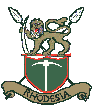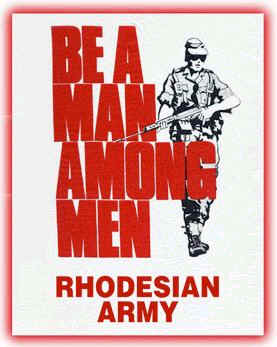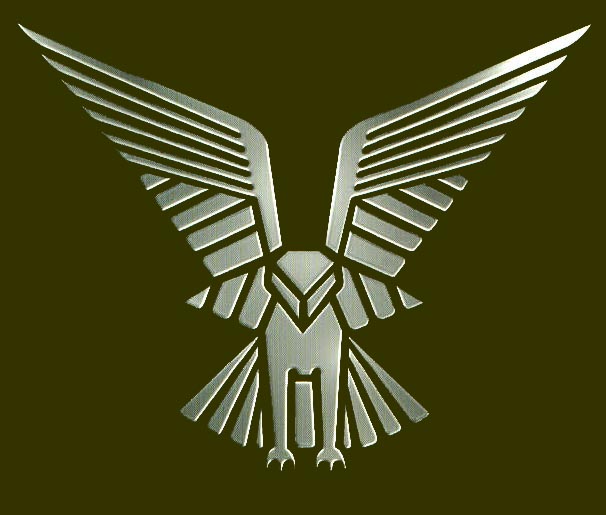|

| |
|
The
Rhodesian Army

1977
CIRCA
|
|
This
is a basic table of organization or order of battle, of the Rhodesian Army as it
appeared in 1977. it lists the major player/units in the Army and gives you an
idea of manpower and ethnic breakup. Note that the Selous Scouts are well seated
and highly recognized within the Army.
Regulars
- Rhodesia
Regiment:
8 battalions (600— 700 men, all white) with recent addition of colored
and Asian reserve.
- Rhodesian
Light Infantry:
3 commando units and 1 weapons support group (about 1000 men, all white);
between one-quarter and one-third mercenaries.
- Rhodesian
African Rifles:
3 battalions (600—700 men, all black) with white officers.
- Rhodesian
Artillery (1st Field Regiment):
1 regular battery of 105mm howitzers and 1 reserve battery of 25-pounders;
white officered.
- Support
and administrative troops:
(signals, engineers, pay corps etc) all white officered.
- Rhodesian
Armored
Car Regiment:
About 400 men, black and white; duties include reconnaissance, patrolling,
convoy escort, crowd control and manning road blocks.
Irregulars
- Special
Air Service:
3 squadrons (60 men each, all white); specialize
in laying
counter-insurgency ambushes
and raids.
- Selous
Scouts:
About 1000 men, large majority of blacks; some mercenaries;
specialize in pseudo operations, mantracking and abduction
(snatch)
missions.
- Grey’s
Scouts:
150—200 men, black and white; horse-mounted infantry for tracking, pursuit
and patrolling.
|
|
Zimbabwe
National Army
circa
1991 |
|
The
Zimbabwe National Army (ZNA) has 47,000 personnel. It is built around
seven brigades, including a Presidential Guard Brigade and an armored
regiment. Other units include 26 maneuver battalions (three Presidential
Guard, one mechanized, one commando, two paratroop, one mounted, and 18
infantry). Support units include an artillery regiment that includes
two air-defense batteries, and an engineer support regiment. The force
is maintained partly through conscription.
The ZNA is characterized by a
number of quality units as well as an overall high quality of personnel.
This is due to an emphasis on training that reflects British military
assistance in the 1980s, as well as the ZNA’s once heavy involvement
in Mozambique’s insurgent war, maintaining the Beira rail and road
corridor that is landlocked Zimbabwe’s main trade lifeline.
|

|




